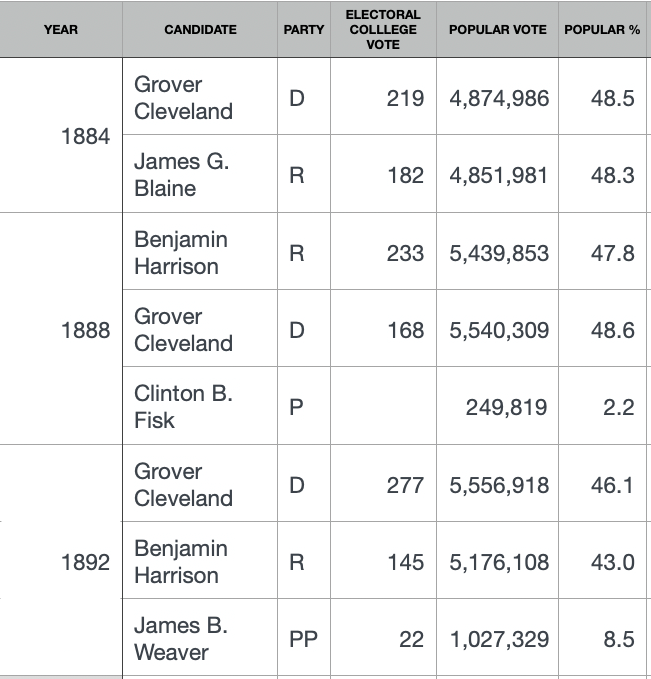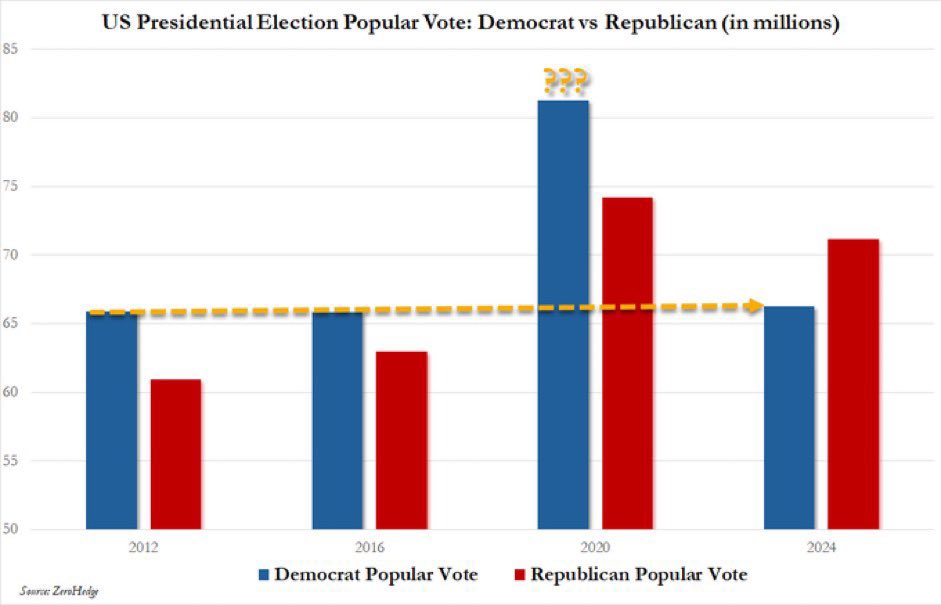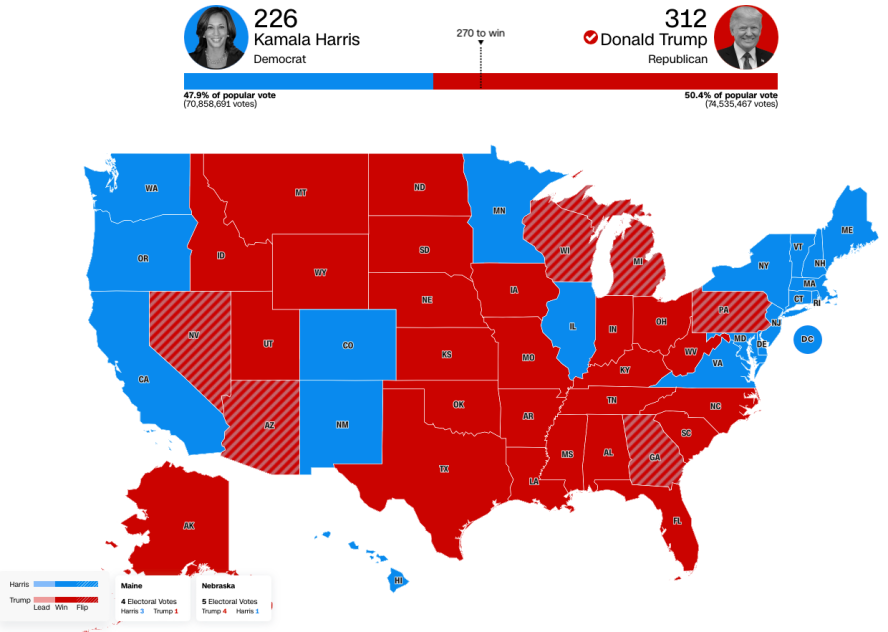“Donald Trump will be America’s 47th president,” explained CNN on Saturday, “after mounting the most momentous comeback in political history.…”
But is it?
Consider the three federal elections that 19th century Democratic politician Stephen Grover Cleveland participated in (winning two non-consecutive presidencies):

Note the course of Grover Cleveland’s three Electoral College returns: 219; 168; 277. Compare with Trump’s: 304; 232; 312*. Cleveland’s popular vote went up each time. Trump’s did too: 62,984,828; 74,223,975; 74,535,879*. You do the math, but it a quick look suggests that Trump’s comeback is no more momentous than Cleveland’s.
The real anomaly in the recent series of three elections was the whopping turnout for the 2020 outing, where Joe Biden, who did not engage in anything like a normal campaign, garnered a whopping 81,283,501 votes. Compare that to Hillary Clinton’s 65,853,514 votes in 2016 and the less-than 71 million votes for Kamala Harris in 2024.
The real question is what happened, in 2024, to 2020’s over ten million “eager” voters. The question may be easy to answer, but it is nevertheless a huge one, and has elicited a popular graph online, widely shared:

Note that it has at least one obvious inaccuracy: the Republican presidential vote did not go down from 2020 to 2024.
Also note that CNN, quoted above, characterized the election as one that “will hand [Trump] massive, disruptive power at home and will send shockwaves around the world.” Accurate, or just CNN being CNN?
The asterisk, above, for 2024 returns is there to remind us that the election counts are not final.
